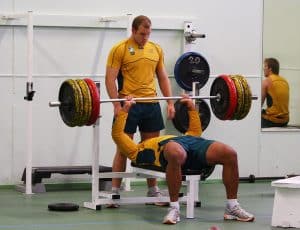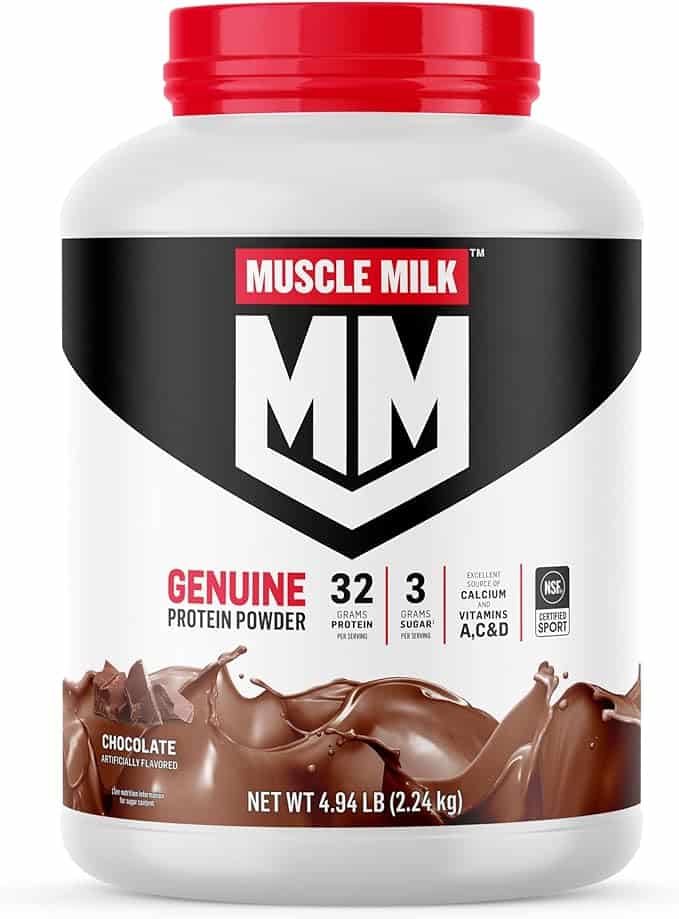 When training to build strength, far too many rugby players fall into the trap of simply trying to increase bulk. While I’m not suggesting that you spend all your time outdoors using rugby equipment, I do think it is important to train your body to repeat rugby-specific movements in the gym.
When training to build strength, far too many rugby players fall into the trap of simply trying to increase bulk. While I’m not suggesting that you spend all your time outdoors using rugby equipment, I do think it is important to train your body to repeat rugby-specific movements in the gym.
You’ll want to focus not just on strength, but also on power, conditioning, and injury prevention. It’s always best for athletes to focus on sport specific movements and strengthening the weakest links in the chain.
Using weights to replicate rugby-specific movements at a higher intensity, trains your body to become more adept at the skills that actually make you a better rugby player. By following these exercises you should notice marked improvements, not only in your physique, but also your playing ability.
Squat
Squats are a fundamental exercise for rugby. Whether it is propelling yourself into tackle or surging forward against an opponent in a ruck, squats will make your legs and hips stronger, allowing you to become more explosive. Lower rep squats will improve strength and power, while higher rep squats will improve conditioning and stamina.
Back squats
The most common of the squat family, back squats involve resting the barbell on your shoulders behind your head. From a standing position, keeping your back straight, bend your knees until your hip joint is parallel with the top of your knee, and then slowly rise back up to your starting position.
From picking up the ball from the floor, to reaching down to attack an opposing player from a strong, low position, rugby involves a lot of bending down at the waist. As a result of this, back injuries are effectively the ‘kiss of death’ for rugby players. By completing the likes of the Romanian deadlift, you will learn how to better keep a natural curve in the back and more easily stave off back injury.
Romanian Deadlift
From a standing position, hold a barbell at hip level with a pronated grip. With your shoulders back, your back arched, and your knees slightly bent, lower the barbell until it is within touching distance of the ground and then slowly rise back up to your starting position.
Push
Alongside the squat, training the push fundamental of rugby is relatively straightforward. Press-ups and the bench-press are two of the most well-known exercises and are obvious contenders to enhance your ability to push. This pushing mechanism reproduces the muscles you would use to hand-off an opponent. To build full body strength and power also consider adding a push press, which involves the legs, core, and vertical pressing.
Bench press
Lying on a bench with your feet on the floor, lower the barbell until it comes into contact with the middle of your chest. Then, slowly push the barbell upwards until your elbows are locked.
Push press
Standing with a barbell or dumbbells, bend the knees slightly into a quarter squat (also the starting position for a hang clean) and drive the hips forward to straighten the legs, extend the ankles, and use that momentum as well as pressing strength, to drive the weight over head. Hold at the top for second to stabilize the shoulders.
Twist
Equally important in twirling a pass cross field as twisting and turning beyond the clutches of a grasping opponent, core strength is an essential asset when it comes to rugby.
Russian twist
Just as easily accomplished with a medicine ball, dumbbell, or weight plate, the Russian twist will help you hone your core muscles. Sit on the floor with your hips and knees at a 90 degree angle. With your back straight and your torso at a 45 degree angle to the floor, twist your torso as far as you can to the left, and then all the way over to the right – that counts as one rep.
The completion of all of these exercises will ensure you are able to build a solid platform upon which to base your progression and development as a rugby player.
Tags: athlete, athletics, bench, deadlift, play sports, press, rugby, Sports, sports performance, squat










